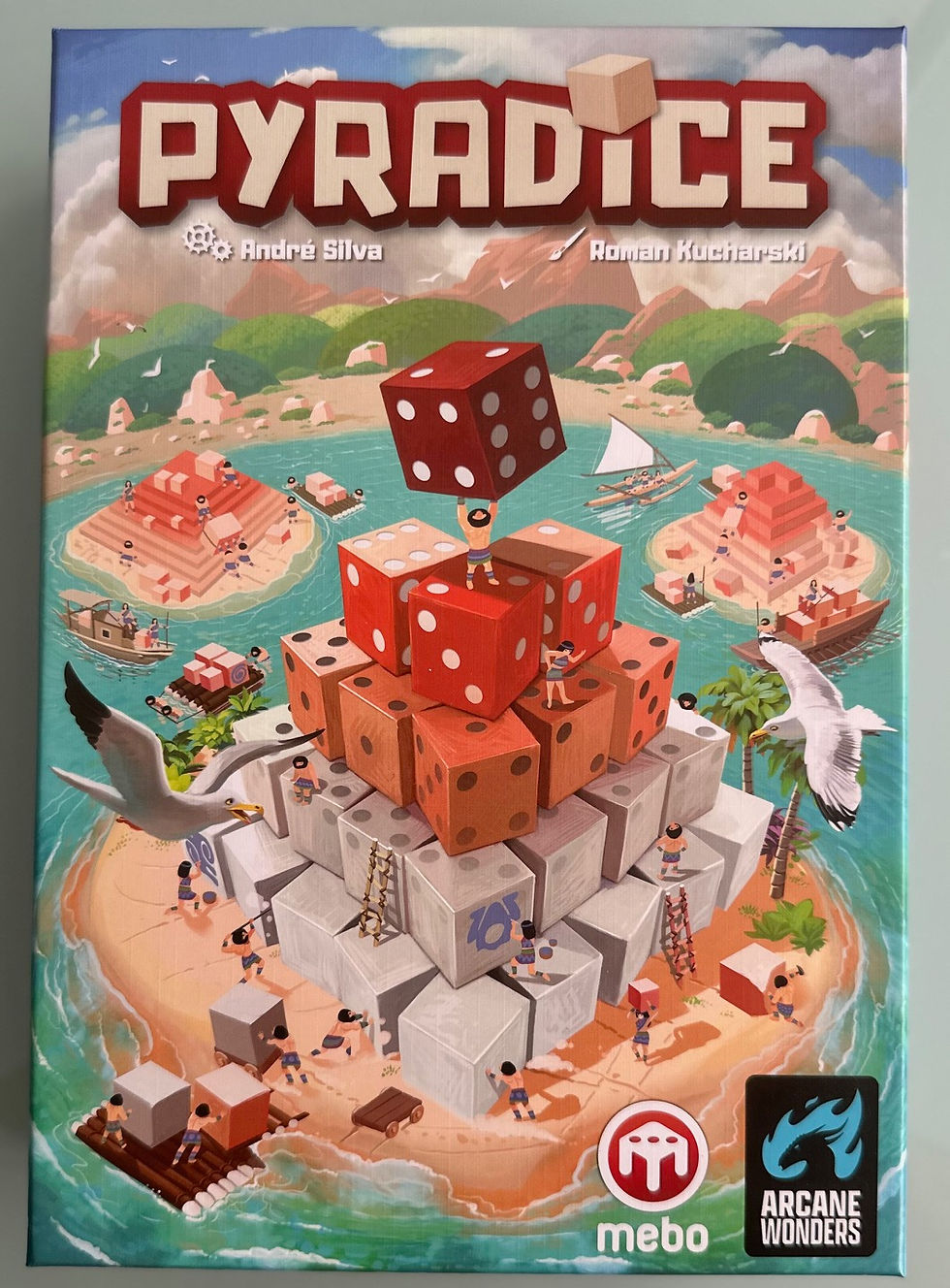Moji
- Board's Eye View

- Dec 27, 2022
- 2 min read
Updated: Apr 12, 2023
Designed and illustrated by Vitali Minin and published by Crazzybox, Moji is a fun family-friendly 2-4 player emoji-themed four-in-a-row game that's not quite as simple as it looks...
There are sets of Moji tiles for each player. You're trying to lay your own tiles to create a horizontal, vertical or diagonal line of four in the 4 x 4 grid that comprises the playing board (actually the bottom of the game box). This isn't just a tic-tac-toe variant, however. You can only place or move tiles if you can generate the requisite commands using your hand of cards.

Moji then combines a conventional four-in-a-row game with an interesting hand management game that builds on the emoji theme by replicating common computer commands. Players always start their turn with a hand of six cards from which they can play as many as they like. Some cards can be played singly for their effect: Enter (to place a Moji tile on any empty space), Del (to remove a Moji from the board), Shift (to swap the positions of two orthogonally adjacent tiles), Tab (to push a tile one square in any orthogonal direction), Esc (to unlock a tile that's been flipped to its locked side). Other cards tho' need to be used in combination: Ctrl with C lets you copy the last effect performed by the previous player; Ctrl with Z undoes the previous player's last effect; Ctrl with S lets you flip a tile to its locked side where it cannot be moved or deleted. There are cards with numbers on them and these can be used either singly or in combination to create a numbered location where you can play a Moji provided the location number is unoccupied. Number cards can be combined using any of the four primary numerical operations (add, subtract, multiply, divide) - so for children playing, Moji can help reinforce basic maths skills. Finally, you can play three cards of the same colour as a 'joker' to replicate any effect other than the number card action.
The commands might sound complicated but they are all fairly intuitive and tie in pretty well with the emoji/internet theme. This is not a game with a high learning curve: you'll find even quite young players will be up and running very quickly and without any need to refer constantly to the card effects spread in the short rulebook.
Of course, it's a 'take that' game as you'll inevitably be trying to sabotage other players' progress towards completing a row, but it's fast and fun - and especially satisfying when you surprise other players by using the board position manipulation cards (Tab and Shift) to unexpectedly complete a row.
Moji is available from Amazon.com at https://www.amazon.com/Casual-Players-Playtime-Minutes-Crazzybox/dp/B0BB1WC1NS




